 |
 |
 |
| |
Immune Activation Signals Similar in MSM With HIV and
MSM on PrEP And Higher Than in HIV-Negative Controls
|
| |
| |
30th CROI, Conference on Retroviruses and Opportunistic Infections, February 19-22, 2023, Seattle
"indicate that factors unrelated to HIV infection contribute to persistent immune activation and central nervous system injury commonly seen in people living with HIV" [lifestyle, other infections, exposure to bacteria/infections, microbial translocation....)
Mark Mascolini
HIV-positive men who have sex with men (MSM) and HIV-negative MSM using preexposure prophylaxis (PrEP) had similar levels of immune activation and neuronal injury markers in a 135-person Swedish study [1]. Marker levels in both these groups significantly exceeded those in HIV-negative people not using PrEP.
Despite tight HIV control with antiretroviral therapy, people with HIV have evidence of ongoing low-level systemic inflammation, as well as immune activation of the central nervous system and signs of neuronal damage. University of Gothenburg researchers and colleagues in Austria who conducted this study noted that relentless inflammation and immune activation can be ascribed to HIV-related factors (HIV release from latently infected T cells, residual HIV replication) or to non-HIV factors (microbial translocation, other infections, and lifestyle factors like smoking, alcohol, and drug use). They conducted this study to figure out the relative importance of HIV-linked factors and non-HIV factors in fueling obdurate inflammation and activation in people with HIV.
Earlier some of these same researchers compared 40 people (90% men) with HIV and a long-term undetectable viral load in blood and cerebrospinal fluid (CSF) with 40 HIV-negative people (92.5% men) matched for age and lifestyle, and 35 blood bank donors (18 of them men) [2]. In those three groups, 57.5% with HIV, 62.5% of the lifestyle-matched HIV-negative group, and 2.9% of blood bank donors had a high monocyte activation profile.
In the new study a team at the University of Gothenburg and Innsbruck Medical University compared (1) 50 HIV-positive men with no HIV RNA detectable in plasma or CSF, (2) 50 HIV-negative men using PrEP and with lifestyles similar to the HIV group, and (3) 35 healthy HIV-negative people (15 men and 20 women) not using PrEP. Median (and range) ages of the three groups were 37.8 (24 to 68), 35.5 (22 to 68), and 44.8 (22 to 66). Median CD4 count and CD4/CD8 ratio lay significantly lower in the HIV group (670, 0.94) than in PrEP users (850, 1.33) or the non-PrEP HIV-negative group (810, 1.52) (P < 0.001).
The researchers measured and compared markers of immune activation, blood-brain barrier integrity, and neuronal injury in serum and CSF. The groups did not differ significantly in CSF beta2-microglobulin, CSF neopterin, blood CD8 cells, or CSF/plasma albumin ratio.
But the HIV group and HIV-negative PrEP users had significantly higher levels of three markers: Men with HIV and HIV-negative PrEP users had significantly higher serum levels of beta2-microglobulin than HIV-negative controls (1.9, 1.9, and 1.5 mg/L, P < 0.001), as well as significantly higher levels of neopterin (8.6, 8.65, and 6.9 nmol/L, P < 0.01). Levels of age-adjusted CSF neurofilament light protein were also significantly higher in men with HIV and men using PrEP than in the HIV-negative control group (347, 371, and 225 ng/L, P < 0.01 and P < 0.001 vs controls). Beta2-microglobulin and neopterin are immune activation markers; neurofilament light protein signals neuronal injury.
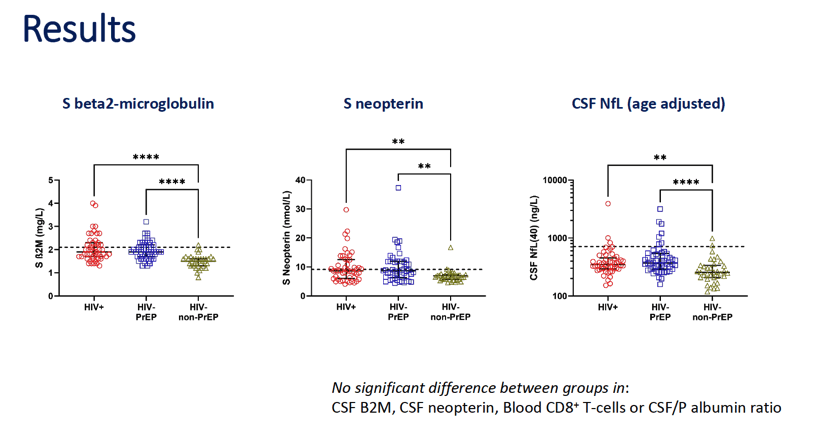
The Gothenburg investigators suggested their findings "indicate that factors unrelated to HIV infection contribute to persistent immune activation and central nervous system injury commonly seen in people living with HIV" and taking antiretroviral therapy. For researchers, the results underline the need to find control groups with lifestyles similar to the group being studied.
References
1. Robertson J, Eden A, Yilmaz A, et al. Increased immune activation in HIV+ MSM on ART, but not when compared to MSM on PrEP. 30th CROI, Conference on Retroviruses and Opportunistic Infections, February 19-22, 2023, Seattle. Abstract 184.
2. Booiman T, Wit FW, Maurer I, et al; Comorbidity in Relation to AIDS (COBRA) Collaboration. High cellular monocyte activation in people living with human immunodeficiency virus on combination antiretroviral therapy and lifestyle-matched controls is associated with greater inflammation in cerebrospinal fluid. Open Forum Infect Dis. 2017;4:ofx108. doi: 10.1093/ofid/ofx108. https://www.ncbi.nlm.nih.gov/pmc/articles/PMC5494939/
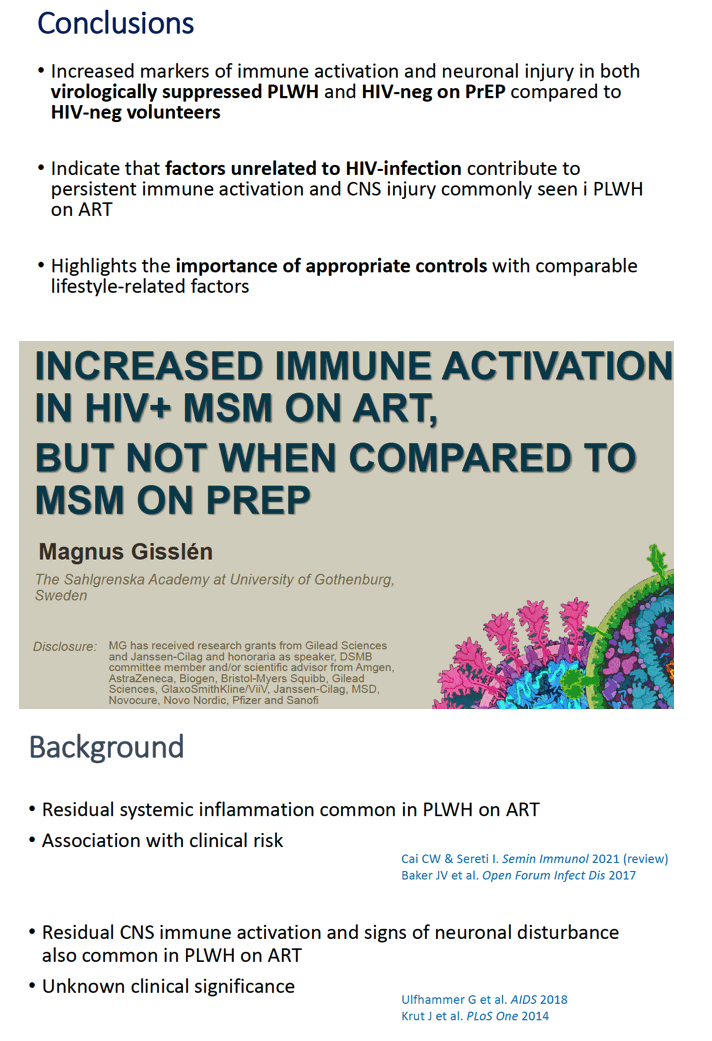
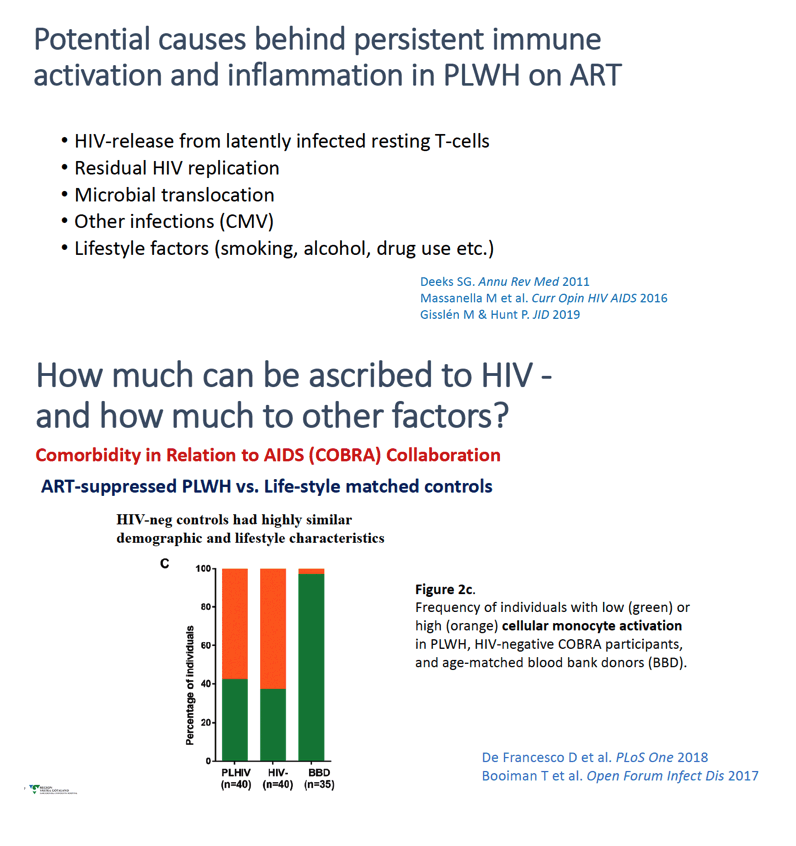
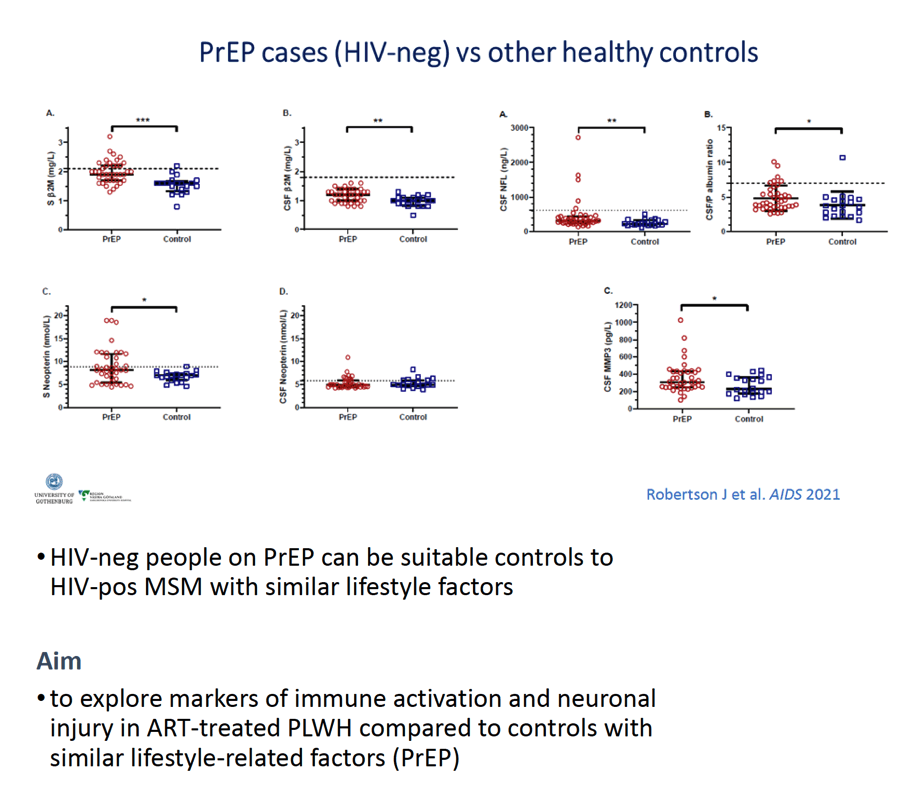
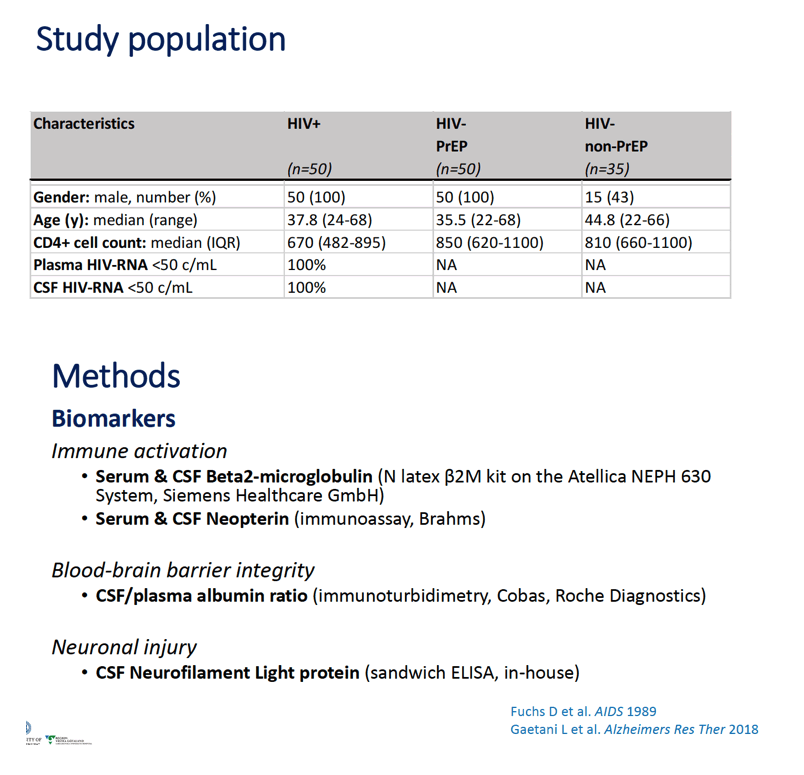
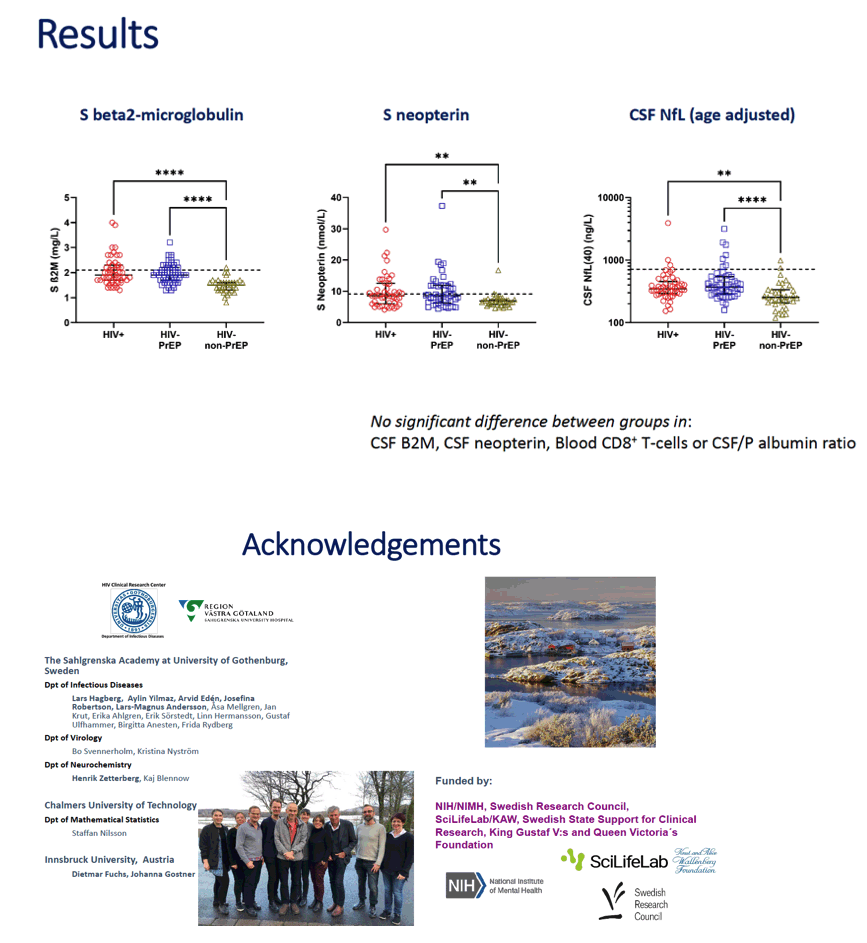
|
| |
|
 |
 |
|
|